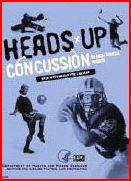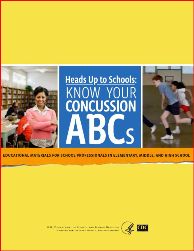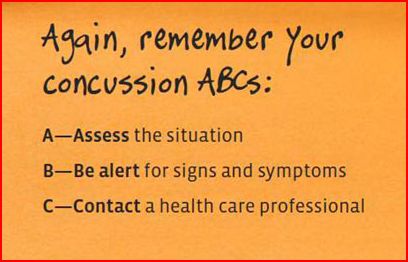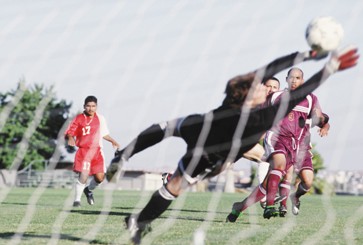|
Implement a
concussion management plan in your school district...
Step 1: Develop safe concussion management guidelines
-
Remove the
athlete from play immediately if a concussion is suspected
and do not allow the athlete to
return to play that day, or at any time until they have
written clearance from a medical professional.
Concussion symptoms can take time to appear, sometimes
hours or days after the injury occurs.
-
Require written
medical authorization before allowing the athlete to
participate in practice or games ...from a qualified
medical professional and ensure that they are 100% symptom free
at rest and during exertion (see below).
-
Follow the international
graduated return-to-play guidelines
After the athlete receives
medical clearance to return-to-play
and is 100% symptom-free at rest, it is important that
they return to play
using gradual return-to-play guidelines.
If symptoms
return during exertion, their brains need more time
to heal.
Step 2: Develop a concussion education plan
|
|
|
|
 |
CDC's Heads Up:
Concussion in Sports The
Centers for Disease Control and Prevention (CDC) has
free
materials for coaches, parents, and athletes that can be ordered or
downloaded
|
 |
CDC's Heads Up to Schools: Know Your
Concussion ABC's
The
Centers for Disease Control and Prevention (CDC) has
launched a comprehensive guide for school personnel.
Materials are free and many can be ordered or
downloaded
|
 |
Washington State's concussion law, known as the
Zackery Lystedt Law,
became effective in July 2009. These resources
provided by the WA Interscholastic Activities
Assoc (WIAA), are now utilized by state school
districts and non-profit sports organizations
and can be used as a guide for any school district:
|
Step 3: Make sure to educate all
involved
-
Coaches
need to
replace “bell rung” or “ding” with the words
“brain injury.” And they should fully understand that if
they return a player to the game before their brain has
healed, it can lead to a prolonged recovery, or
worse. Then they need to pass that knowledge on to
their team.
-
Athletes should be encouraged to speak up about their own symptoms and feel comfortable enough to tell an adult if their teammates are acting abnormally during practice or the big game. Not being able to remember your locker combination isn’t funny…it’s a brain injury.
-
Parents need to learn how to recognize the sometimes subtle signs that can be indicative of concussions.
These symptoms can appear days or weeks after the
injury. No athlete should return to play until they are
100% symptom-free at rest and during exertion, and a
medical professional has determined it’s safe.
-
School district personnel
may be the first to notice that something is awry. A normally diligent student who can’t seem to concentrate in class or who no longer turns in
assignments, or a school nurse who notices other signs.
(school nurse info coming soon)
Step 4: Consider hiring an
athletic trainer
|
|
|
Step 5:
Consider neuropsychological testing
-
... it's a good idea under the right
circumstances. Computerized neuropsychological testing
before an injury occurs can provide valuable information
that could help determine a return-to-play schedule for
an injured athlete.
Many school districts offer this testing to
their athletes free of charge through booster clubs or
other sources. There are several companies who offer
this product:
ImPACT,
Axon Sports,
and
HeadMinder.
After a
head injury, before returning to play,
an athlete will be
re-tested to see if their results match their
pre-injury performance.
This information provides trained
medical professionals with another tool for
diagnosing concussion recovery. However, this is only one
part of the return-to-play decision.
|
|
| |
|







